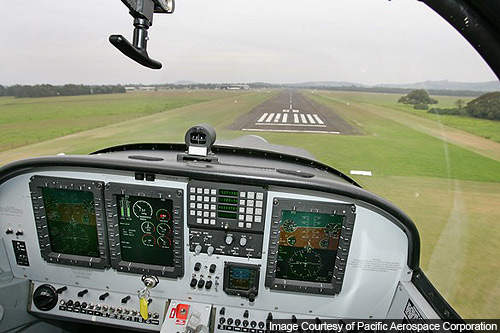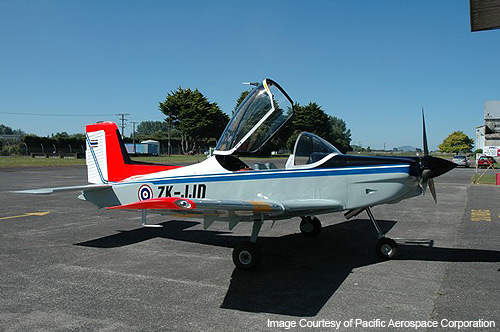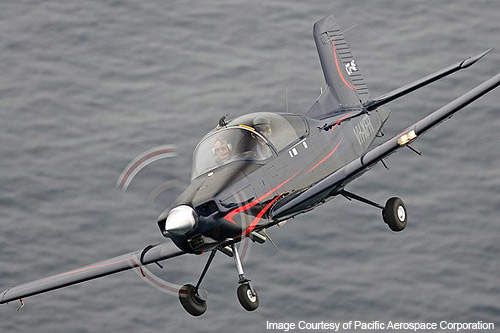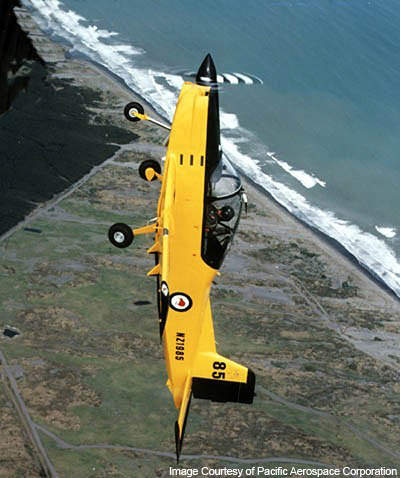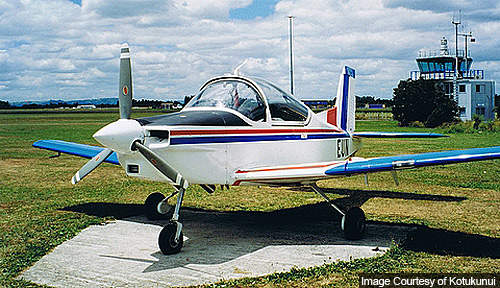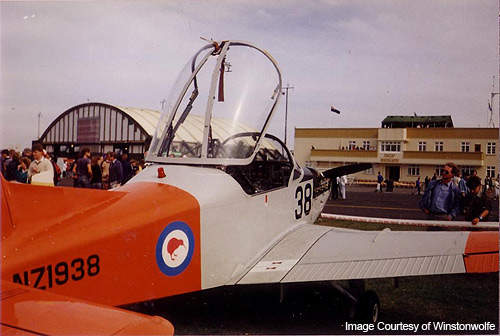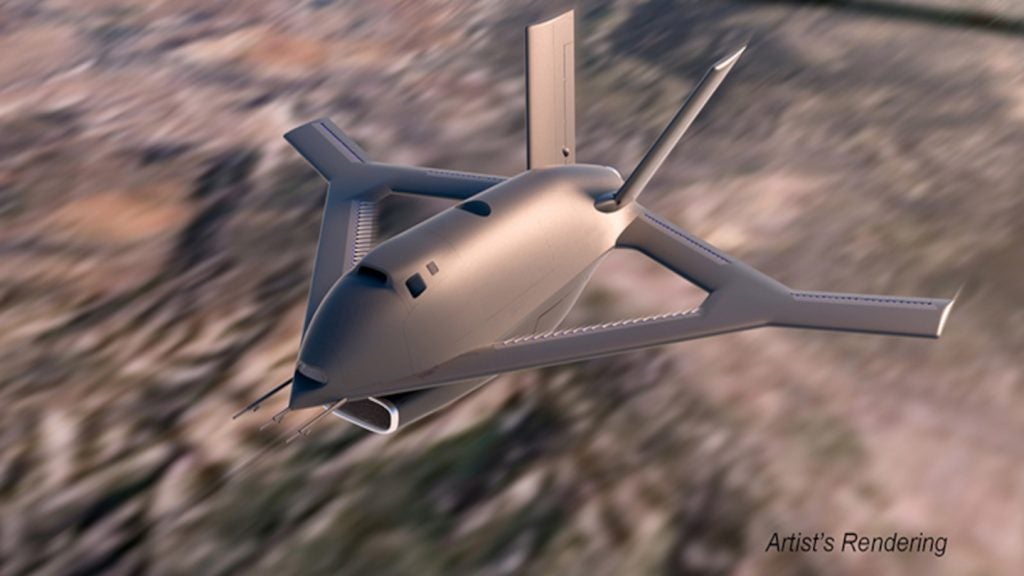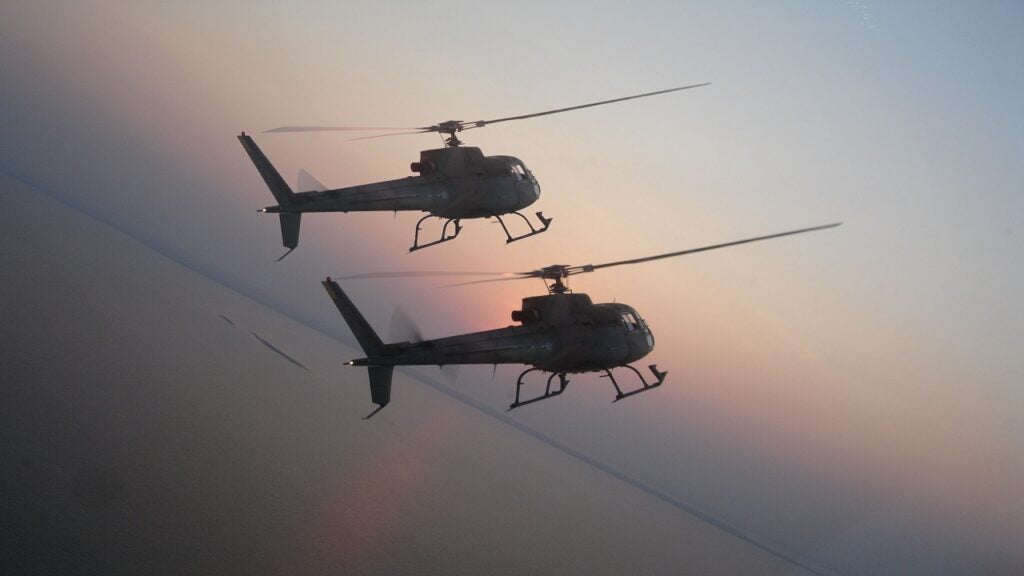CT-4 Airtrainer is a single engine basic trainer aircraft designed and built by Pacific Aerospace Corporation (PAC) in Hamilton, New Zealand. It was derived from its predecessor Victa Aircruiser.
The aircraft is deployed with Royal New Zealand Air Force (RNZAF), Royal Thai Air Force (RTAF), Royal Australian Air Force (RAAF) and BAE Flight Training Australia.
A total of 153 CT-4s were operational worldwide as of January 2005.
Variations of the CT-4 Airtrainer
The CT-4 has seven variants: CT-4A, CT-4B, CT-4C, CT-4D, CT-4E, CT-4F and CT-4G.
The CT-4A is the first production model powered by a Continental piston engine rated at 200hp (149kW) of output power. A total of 78 aircraft are deployed with RTAF and RAAF.
The CT-4B is an enhanced version of CT-4A, incorporated with either a 210hp or 225hp Continental piston engine. About 38 CT-4Bs are operational with the RNZAF and RTAF.
The CT-4C is a modified version of CT-4B and is powered by a turboprop engine.
Also known as CT-4CR, the CT-4D was a model proposed to be fitted with a retractable landing gear.
The CT-4E is the latest variant powered by a Lycoming AEIO-540L1B5 engine rated at 300hp (223kW)of output power. A total of 37 aircraft were produced for deployment in the RNZAF, RTAF and Singapore. The maiden flight of the variant took place in December 1991.
The CT-4F is powered by a 300hp Continental piston engine. The variant is fitted with glass cockpit avionics, underwing hardpoints and air conditioning systems. Its demonstrator was developed in May 2007.
The CT-4G is an advanced version of CT-4E, incorporated with Garmin G1000 glass cockpit.
CT-4 basic trainer aircraft orders
Recent orders of the CT-4 include: RTAF (24), RAAF (37), RNZAF (19), Breco (14) and Royal Rhodesian Air Force (14).
The RNZAF ordered 13 CT-4Es in 1998, the first of which was delivered in August 1998. The deliveries were concluded by June 1999. Approximately 16 CT-4Es were procured by the RTAF in 2001.
Two CT-4Es were delivered to the Defence Science and Technology Agency (DSTA) of Singapore in 2002.
Design and features
The CT-4 was designed by modifying the Airtourer and Aircruiser aircraft. The design modifications included overhauling the fuselage, incorporating modern engines, wings and the bubble glass canopy.
The aircraft was designed to carry out pilot training and aerobatic manoeuvres even in the worst weather conditions. It features a fixed tricycle landing gear, electronic flight instrumentation system, rudder, ailerons, lighting panel, global positioning system, fuel injection system and nose wheel steering.
Development
The development of the CT-4 began in Australia in 1960s and was later transferred to New Zealand. A total of 87 CT-4s were built in the 1970s.
The maiden flight of the Airtrainer took place in February 1972 and the aircraft entered service in October 1973. Production of the CT-4 was deserted in May 1982.
PAC resumed production of the CT-4 in 1990. An advance CT-4E aircraft was produced in an attempt to win a contract from the United States Air Force (USAF). The contract was however lost. The production of CT-4E was terminated in May 1992 and restarted after 1996.
Cockpit
The spacious glass cockpit of the CT-4 accommodates two flight crew members.
It is equipped with two adjustable side by side seats in the front side and a third seat in the rear side is optional. The backward lifting bubble glass canopy renders clear visibility to the flight crew. An air conditioning system maintains constant temperature in the cockpit.
The length and width of the cockpit are 2.72m and 1.1m respectively. The height is 1.17m.
Engines
The CT-4 Airtrainer is powered by a single IO360-HB9 piston engine rated at 157kW of output power. The engine is designed and manufactured by Teledyne Continental Motors of US.
It is a four-cylinder, horizontally opposed and fuel injected engine driven by a three bladed constant hartzell propeller constructed with aluminium.
Performance
The CT-4 can climb at the rate of 9.2m/s. The maximum and cruise speeds of the aircraft are 426km/h and 387km/h respectively. The stall speed is 111km/h. The range is 1,112km. The take-off and landing roll of the aircraft are 183m and 168m respectively.
New Zealand Defence Sector – Market Opportunity & Entry Strategy, Analyses and Forecasts to 2015
Detailed analysis and forecasts of the New Zealand defence market are available from our business information platform Strategic Defence Intelligence. For more information click here or contact us: EMEA: +44 20 7936 6783; Americas: +1 415 439 4914; Asia Pacific: +61 2 9947 9709 or via email.

